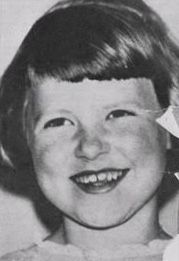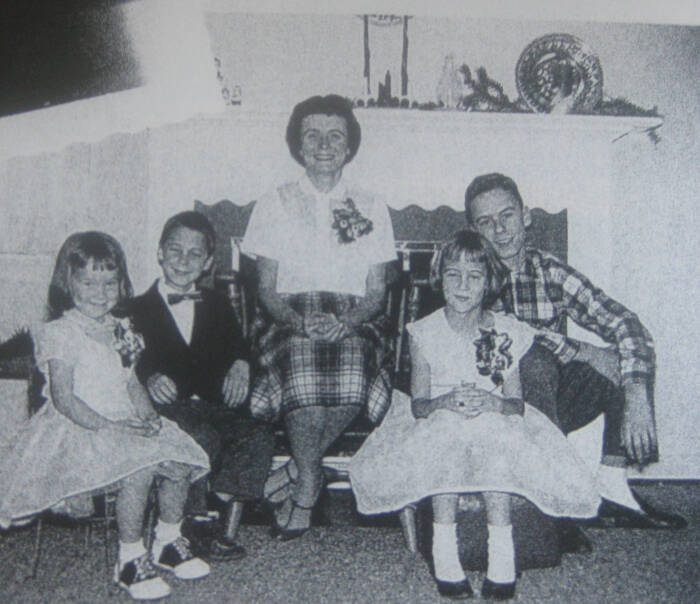Bundy: Ann Marie Burr (Suspected)
Our first post in this Bundy series is going to focus on what many consider Bundy’s likely first victim – Ann Marie Burr. The Burr case is also probably the most heavily covered and investigated of the fourteen we’re going to cover for this series. Each case could be its own deep-dive book, so we’re only going to cover the broad strokes.
Before we dive into this series, I want to take a moment to reiterate something that I strive for here at the Morbid Library – unless someone is definitively deceased, I try to refer to them in the present tense, even if they are presumed or declared deceased. The reasoning behind this is that the person did not cease to exist simply because they vanished. Until they are definitively proven to be deceased, there is always a sliver of hope.
Now, let’s explore.
Who Is Ann Marie?
Unfortunately, we don’t know a lot about Ann Marie, so this section will be depressingly short. No matter how little we know, though, it’s important to remember the person behind the case. Ann Marie Burr was the oldest of four kids, born to Donald and Beverly Burr. Her siblings are named Julie, Mary, and Gregory. The family was Roman Catholic. Ann Marie was born in Del Norte County, California. The family moved to Tacoma because Donald got a job at Camp Murray, a National Guard post about fifteen miles south of the city.
In August 1961, Ann Marie was eight years old. She had blonde hair and hazel eyes. She stood at about 4’2” and weighed about 35 pounds. She went to Grant Elementary School and was in the third grade. She was artistic and liked playing the piano. And in the very early hours of August 31, 1961, she would vanish.

via Find a Grave)
The Disappearance
Ann Marie shared a room with her sister Mary, who was three at the time. On that fateful night in 1961, Mary was dealing with a broken arm and was likely uncomfortable and in pain as it healed. Ann Marie, probably frustrated with her sleep being interrupted by her younger sister’s crying, brought Mary to their parents room, hoping that they would deal with Mary’s pain. But both girls were sent back to their room to go back to sleep. This was the last time Ann Marie has ever been seen.
When Beverly awoke around 5:30 AM and checked on the girls, she found Ann Marie’s bed empty. As she searched the house for her oldest daughter, she checked the front door. Beverly knew that the door had been locked – both the knob and the chain – before she’d retired the previous night. Now the door was not only unlocked, but the door was ajar. A living room window that had been left open to allow a breeze in had also been opened wider. Thread was caught in its frame. As she investigated further, Beverly saw that a bench from their backyard had been placed beneath the window to allow easier access from outside. Someone had been in the house.
No one had heard anything that they considered suspicious. The dog had been barking the previous night, but it had been written off as the dog being afraid of the storm that had rolled in. The other kids had slept through whatever happened, as had both Beverly and Donald. There were no signs of a struggle – no blood, no misplaced furniture, nothing broken.

via CrimePiper)
Investigators didn’t have much more luck searching the house. They managed to find two footprints outside the house – one near the bench and one outside the basement window. The prints matched a Keds size 6 or 7 shoe, leading investigators to believe that whoever had been standing outside the window was either a woman, a small man, or a teenager. The Burr’s neighbors came forward stating that they had seen someone standing outside the home a few days previously, but the description they gave was undetailed.
The incident was taken seriously and considered an abduction from the get-go. The working theory was that Ann Marie knew who had taken her, as the chain lock on the front door would have had to be undone from the inside. Extensive research was done into sex offenders living in the Tacoma area, but no leads resulted from it. A teenage neighbor was also suspected and polygraphed – he passed two tests but investigators never let him go as a possible suspect. Another possible suspect was Ralph Larkee from Spokane, Washington. He was not suspected until 1964, when he kidnapped a 10 year old girl from Tacoma. He dropped her off unharmed. Larkee died by suicide when the FBI closed in on him. The Burrs received a ransom demand, but it ended up being not credible – the man simply saw an opportunity to make a quick buck off of someone’s suffering, and ended up being charged with disorderly conduct.
The Bundy Connection
Ted Bundy was 14 years old and lived relatively nearby at the time of Ann Marie’s disappearance. Bundy’s great uncle lived blocks from the Burr home, and Bundy had been known to visit frequently, which is likely how he came into contact with Ann Marie. Bundy was working as a paperboy at the time of Ann Marie’s disappearance as well, which would require physical stamina and long stretches of walking. So, while the distance between his home and Ann Marie’s was somewhat far – modern maps clock the distance at around an hour at normal walking speed – I don’t think this would be enough to keep him from acting out any compulsion or impulse he was experiencing. The voyeuristic aspects of the disappearance also align with a budding sexual sadist and power/control killer such as Bundy.

via All That’s Interesting)
In death row interviews, Bundy told interviewers that he had committed murders that he would never take ownership of and would never speak of. He went on to say that those cases were too close to his family, committed too close to home, or the victims were too young. Ann Marie Burr exemplifies all three of those criteria. This is the closest Bundy got to admitting involvement.
In 2011, investigators attempted to use touch DNA from the crime scene to definitively link Bundy to the case. Unfortunately, due to the small sample size, a DNA profile could not be built out and was therefore unable to be linked to Bundy.
Personally, I don’t think that Bundy should be considered the only or even most plausible suspect in this case. It is very interesting that he was so familiar with the area and that he hinted there were cases he would never speak of, cases that seem to align perfectly with the circumstances of Ann Marie’s. It’s tempting to assign blame to Bundy, because that would mean there’s one less bad person out there. However, if Bundy is not responsible, whoever is responsible for Ann Marie’s disappearance is escaping justice. Ann Marie and her family deserve true justice, not a sensational means to an end. So I urge everyone reading this to keep their blinders off, no matter how tantalizing the Bundy link may be.
Investigating Agencies
If you or anyone you know happens to have any leads, tips, or evidence in regards to Ann Marie’s disappearance, please get in contact with the proper authorities. This year will mark the 60th anniversary of her disappearance, and that is simply too long to wait for answers – her parents both died without knowing what happened, but her four siblings are still alive and looking for the truth. The Tacoma Police Department can be contacted at 253-798-4721. The contact person is Detective Devault and the Agency Case Number is 61-76685.
Sources
- https://charleyproject.org/case/ann-marie-burr
- https://www.namus.gov/MissingPersons/Case#/4593
- http://www.doenetwork.org/cases/1670dfwa.html
- https://www.findagrave.com/memorial/8274521/ann-marie-burr
- https://www.king5.com/amp/article/news/crime/ted-bundy-ann-marie-burr-investigation-update-cold-case-podcast/281-062d49da-b728-4753-b859-f95559a0740f
- https://bundyphile.com/2020/11/27/did-ted-bundy-kill-ann-marie-burr/amp/
- http://trackmissing.org/Cases/Details/165
- https://m.huffpost.com/us/entry/996660/amp
- https://www.newspapers.com/clip/7207695/ann-marie-burr/
- https://jttownsend.com/ted-bundys-first-victim-the-vanishing-of-ann-marie-burr/
- https://mynorthwest.com/40604/author-ted-bundy-was-capable-of-killing-tacoma-child-as-teen/amp/
- https://screenrant.com/netflixs-ted-bundy-tapes-left-out/am
- https://historylink.org/File/21027
- https://crimepiperblog.wordpress.com/2019/11/17/ted-bundy-the-unconfirmed-cases-ann-marie-burr/
